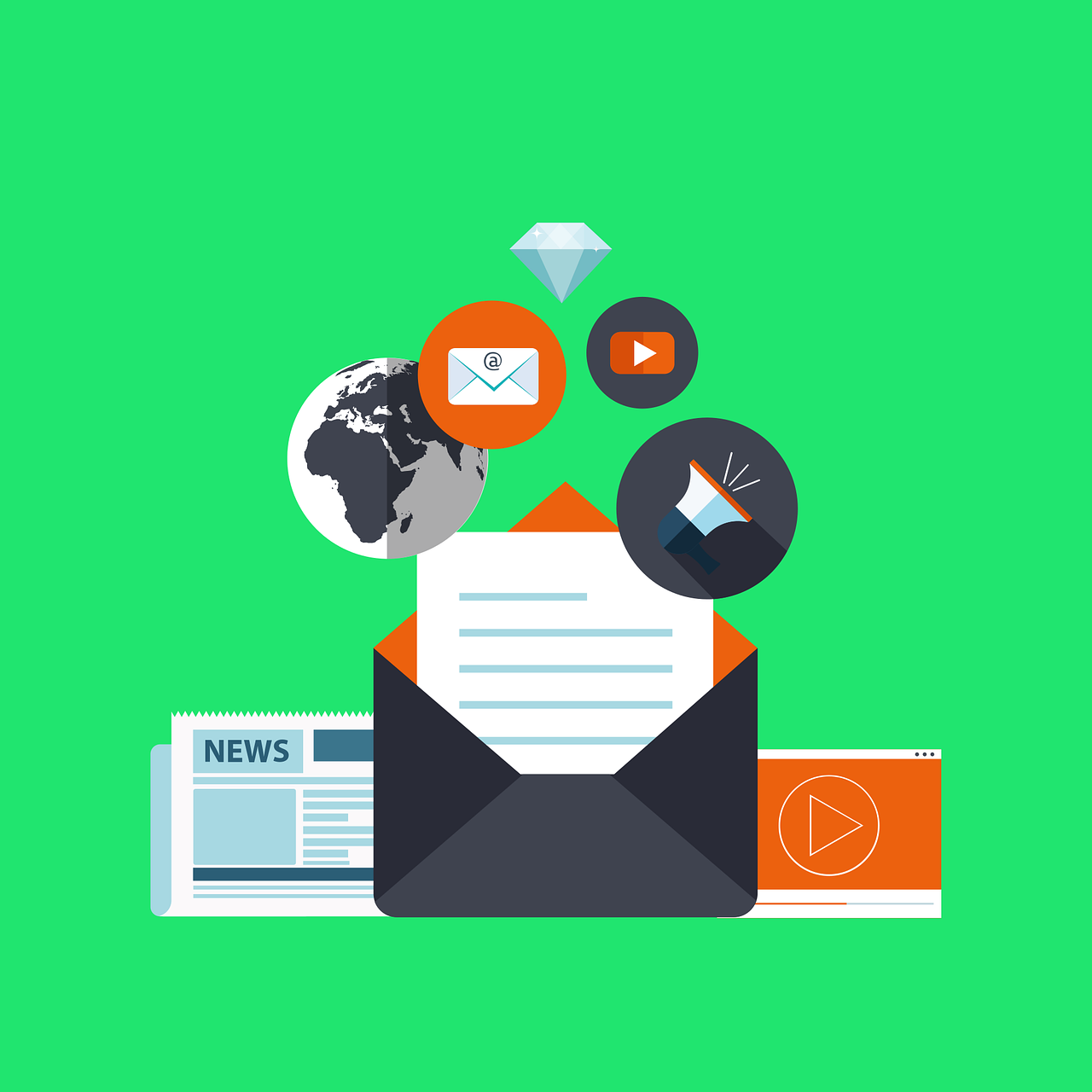Complete Guide on How to Start a Newsletter Business.

Starting an email newsletter business can be a rewarding venture, offering a platform to share valuable content, build a community, and even generate revenue. In this comprehensive guide, we'll walk you through the steps to create and grow a successful email newsletter business.
Why Start an Email Newsletter Business?
Email newsletters remain a powerful tool for communication and marketing. Here are some reasons to consider starting your own:
- Direct Connection: Email provides a direct line of communication with your audience.
- Engagement: Newsletters allow you to engage with your subscribers on a regular basis.
- Revenue Potential: You can monetize your newsletter through sponsorships, affiliate marketing, or premium subscriptions.
- Brand Building: Newsletters help build brand awareness and establish authority in your niche.

Step-by-Step Guide to Starting an Email Newsletter Business
1. Define Your Niche and Audience
Defining your niche involves identifying the specific topic or subject matter that your newsletter will focus on. This could be anything from fitness and wellness to technology or personal finance. Here's how to do it:
- Passion and Expertise: Choose a niche that aligns with your interests, passions, and expertise. This will not only make creating content more enjoyable for you but also help you establish credibility and authority within your niche.
- Audience Research: Conduct thorough research to understand the demographics, interests, and needs of your target audience. This may involve analyzing existing data, conducting surveys, or engaging with potential subscribers on social media or forums. Understanding your audience will help you tailor your content to their preferences and address their pain points effectively.
- Differentiation: Identify what sets your newsletter apart from others in the same niche. Consider what unique perspective, insights, or value you can offer to your subscribers that they can't find elsewhere. This could be your personal expertise, a unique angle on the topic, or a focus on a specific segment within the niche.
2. Choose an Email Marketing Platform
Choosing an email marketing platform is essential for managing your subscriber list, designing and sending newsletters, and tracking performance metrics. Here's how to make the right choice:
- Popular Platforms: There are numerous email marketing platforms available, each offering different features and pricing plans. Some popular options include Mailchimp, ConvertKit, Constant Contact, and AWeber. Research each platform's features, user reviews, and pricing to determine which one best suits your needs and budget.
- Features: Consider the features offered by each platform, such as automation, segmentation, A/B testing, and analytics. Think about the specific functionalities you'll need to execute your email marketing strategy effectively. For example, if you plan to send targeted campaigns to different segments of your audience, look for a platform with robust segmentation capabilities.
- Ease of Use: Choose a platform that is user-friendly and intuitive to navigate, especially if you're new to email marketing. Look for platforms that offer drag-and-drop editors, pre-designed templates, and helpful tutorials or customer support to assist you in creating and sending newsletters easily.
3. Create Compelling Content
Creating compelling content is the backbone of any successful email newsletter. Here's a breakdown of what this entails:
- Content Calendar: Planning your content in advance ensures consistency and allows you to maintain a steady flow of engaging material. Your content calendar should outline topics, publication dates, and any special themes or events you want to cover.
- Value Proposition: Your newsletter should offer value to your subscribers by providing content that educates, entertains, or solves their problems. Understand your audience's interests and pain points, and tailor your content to meet their needs.
- Mix of Content Types: Variety keeps your newsletter interesting and caters to different preferences. Mix up your content with articles, videos, podcasts, infographics, interviews, or curated lists. Experiment with different formats to see what resonates best with your audience.
- Personalization: Personalizing your content makes subscribers feel valued and increases engagement. Address subscribers by name, segment your list based on interests or behavior, and tailor content recommendations accordingly. Use data and feedback to continually refine your personalization efforts.
4. Design Your Newsletter
A visually appealing and user-friendly design enhances the effectiveness of your email newsletter. Here's how to design a compelling newsletter:
- Templates: Most email marketing platforms offer pre-designed templates that you can customize to match your brand. Choose a template that suits your content layout preferences and provides a good balance of text and visuals.
- Branding: Consistent branding helps reinforce your brand identity and fosters recognition among subscribers. Incorporate your brand colors, logo, fonts, and imagery into your newsletter design to create a cohesive and professional look.
- Mobile Optimization: With the majority of email opens occurring on mobile devices, it's crucial to optimize your newsletter for mobile responsiveness. Ensure your design adapts seamlessly to different screen sizes and maintains readability on smaller screens.
- Call to Action: Every newsletter should include a clear and compelling call to action (CTA) that prompts subscribers to take the desired action, whether it's reading an article, watching a video, making a purchase, or sharing the newsletter with others. Use contrasting colors, persuasive copy, and prominent placement to make your CTAs stand out.
5. Build Your Subscriber List
Building a strong subscriber list is essential for the success of your email newsletter business. Here are some strategies to attract and grow your subscriber base:
- Opt-in Forms: Opt-in forms are the primary method for collecting email addresses from visitors to your website or social media channels. These forms typically include fields for users to enter their email addresses and sometimes additional information like their name or interests. Place opt-in forms prominently on your website, such as in the sidebar, header, footer, or as pop-ups, to capture the attention of your visitors. You can also use social media platforms like Facebook and Twitter to create lead generation ads that drive users to your opt-in forms.
- Lead Magnets: A lead magnet is a valuable incentive offered to potential subscribers in exchange for their email addresses. Lead magnets can take various forms, including ebooks, guides, checklists, templates, webinars, or exclusive access to content. Create compelling lead magnets that align with your newsletter's topic and provide genuine value to your audience. Promote your lead magnets on your website, social media channels, and other marketing channels to attract subscribers.
- Guest Posting: Guest posting involves writing articles or contributing content to other blogs, websites, or newsletters in your niche. By guest posting on platforms with established audiences, you can reach new readers who may be interested in subscribing to your newsletter. Look for opportunities to contribute guest posts to reputable websites or collaborate with fellow newsletter creators to cross-promote each other's content.
- Cross-Promotion: Cross-promotion involves partnering with other newsletter creators or brands to promote each other's content or products to your respective audiences. Identify complementary newsletters or brands with similar target audiences but non-competing products or services. Collaborate on joint campaigns, promotions, or giveaways to mutually benefit from each other's reach and exposure.
6. Monetize Your Newsletter
Once you've built a sizable subscriber list, you can explore various monetization strategies to generate revenue from your email newsletter business:
- Sponsorships: Sponsorships involve partnering with brands or advertisers to feature sponsored content, advertisements, or product placements in your newsletter. Brands pay you a fee to reach your audience with their messaging or promotions. As your newsletter grows in popularity and engagement, you can attract sponsors willing to pay for access to your subscribers.
- Affiliate Marketing: Affiliate marketing allows you to earn commissions by promoting other companies' products or services to your subscribers. You include affiliate links in your newsletter content, and when subscribers make purchases through those links, you receive a commission. Choose affiliate products or services that align with your newsletter's theme and are relevant to your audience's interests to maximize conversions and earnings.
- Premium Subscriptions: Premium subscriptions involve offering exclusive content, perks, or features to subscribers who opt for a paid subscription tier. Create premium newsletter content, such as in-depth articles, insider insights, exclusive interviews, or behind-the-scenes access, that provides additional value to paying subscribers. Offer tiered subscription plans with varying levels of benefits and pricing to cater to different segments of your audience.
- Product Sales: If you have your own products or digital offerings, you can promote and sell them directly to your newsletter subscribers. This could include physical products, digital downloads, online courses, consulting services, or membership programs. Use your newsletter to showcase your products or services, highlight their benefits, and encourage subscribers to make purchases. Offer special discounts or promotions exclusively to your subscribers to incentivize sales.
7: Analyze and Optimize
Analyzing and optimizing your email newsletter business involves continuously monitoring its performance and making adjustments to improve results. Here's a breakdown of key elements:
- Metrics to Track: Keep an eye on important metrics such as open rates (the percentage of subscribers who open your emails), click-through rates (the percentage of subscribers who click on links within your emails), and subscriber growth. These metrics provide insights into the effectiveness of your campaigns and help you identify areas for improvement.
- A/B Testing: A/B testing, also known as split testing, involves experimenting with different elements of your emails to see which variations perform better. This could include testing different subject lines, email designs, content formats, or send times. By testing one variable at a time and comparing results, you can determine what resonates most with your audience and optimize your future campaigns accordingly.
- Feedback: Actively seek feedback from your subscribers to understand their preferences, interests, and pain points. You can gather feedback through surveys, polls, or simply by encouraging subscribers to reply to your emails with their thoughts and opinions. Use this feedback to tailor your content, improve your offerings, and strengthen your relationship with your audience.
Starting an email newsletter business is an exciting journey that offers numerous opportunities for growth and success. In conclusion:
- Careful Planning: Success in the email newsletter space requires careful planning and strategic execution. Take the time to define your niche, understand your audience, and craft a compelling value proposition that sets you apart from competitors.
- Consistent Effort: Building a thriving newsletter business takes time and consistent effort. Stay committed to delivering high-quality content, engaging with your subscribers, and refining your approach based on feedback and analytics.
- Value Delivery: The key to long-term success in the email newsletter business is delivering ongoing value to your subscribers. Focus on providing content that educates, entertains, or solves problems for your audience, and prioritize their needs and interests above all else.
- Adaptability: The digital landscape is constantly evolving, so it's essential to remain adaptable and open to change. Stay informed about industry trends, experiment with new strategies and technologies, and be willing to pivot your approach as needed to stay relevant and competitive.
By following these principles and continuously refining your approach, you can build a successful email newsletter business that not only drives engagement and revenue but also fosters meaningful connections with your audience.





